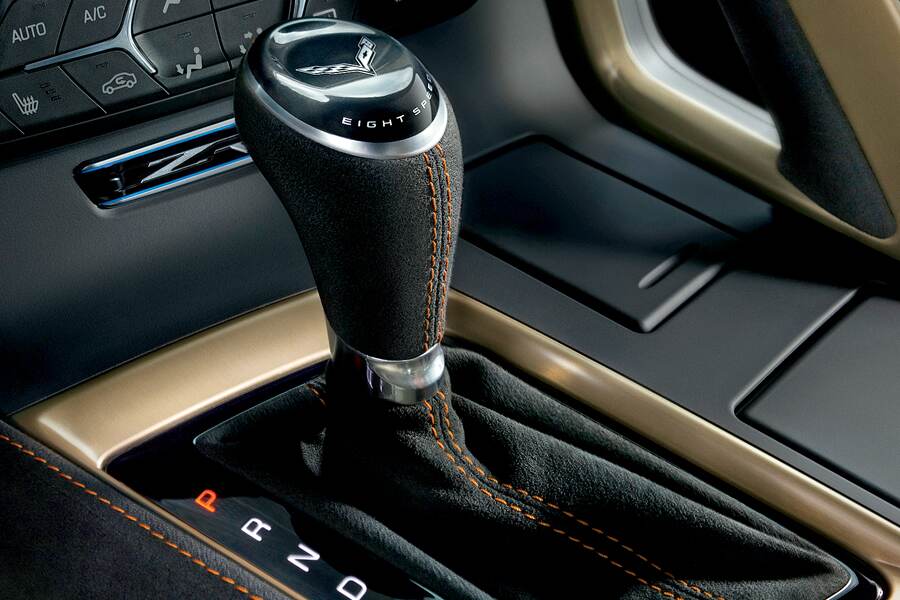Back in 1990, when Chevrolet dropped the C4 ZR-1, headlines screamed, “King of the Hill,” “Corvette from Hell” and “The Beast.” All apply to the new 2019 edition, but the car’s eyeball-popping performance capabilities merit a fresh outlay of appellative creativity. “Satan’s Sleigh,” maybe?
Stats for the fourth-generation Corvette ZR1? An under-three-second 0-to-60 time backed up by high 10s in the quarter-mile. Find a long, straight, wide and smooth road, bury the gas and 45 seconds or so later, you’ll be doing over 200 mph. Top speed is claimed to be 212.
Chevy surprised us with a base price of $119,995 for the coupe, undercutting most pundits’ guess of $130K or more. Factor in inflation, and that’s only 2 percent more than the prices of both the ’90 and ’09 versions. In line with other topless Corvette offerings, the convertible ZR1 stickers for an additional $4K, still a bargain compared with similarly capable competitive offerings.

Engine
Naturally, the C7 ZR1 will be defined by its supercharged, 6.2-liter LT5 V-8. We’ll have an in-depth story on this engine in the near future, but for now, know that it makes an SAE-certified 755 horsepower at 6,400 rpm and a beyond-stump-pulling 715 pound-feet torque at 3,600 revs. The key enabler here is a larger Eaton TVS supercharger that is nearly three inches higher, boasts 52 percent more displacement and features a bigger throttle body than the LT4’s R1740 unit. To cover the height increase, the blower has a carbon-fiber top surrounded by a carbon “halo” hood. (Bonus feature: As with the “shaker”-hood-equipped muscle cars of yore, you can actually see the engine move in reaction to changes in throttle input.)
Fuel delivery is handled by a combination of direct and port injection, a pairing that is said to be responsible for the car’s already-legendary ability to blow a jet of blue flame out of the exhaust at wide-open throttle. That exhaust is a “four-mode” system that can be anything from super quiet to racetrack loud, depending on how it’s set. The four driver-selectable modes include Stealth, Tour, Sport and Track, the latter of which is said to be “significantly louder” than the already boisterous C7 Z06.

Speaking of the Z06, it’s worth noting that early versions of the previous Corvette flagship have a bit of a reputation for overheating when driven hard on a racetrack. (Changes made to ’17 models seem to have improved the situation, at least on manual cars.) In response Chevy has equipped the new ZR1 with either 12 or 13 different heat exchangers, depending on transmission, and certified it for track use in 100-degree (F) weather. (The previous testing regime certified cars at 86 degrees.)
Aero
For some time, we’ve seen ZR1 development vehicles sporting a road-race-style rear wing. This so-called “High Wing,” part of the optional ZTK Performance Package, is crafted from carbon fiber and affixed to the cross-bar inside the rear fascia. This configuration ensures that downforce is applied directly to the chassis. Were the wing simply attached to bodywork, the massive downward shove it generates at high speed would cause the panels to fail. ZTK also includes stiffer springs, Michelin Pilot Sport Cup 2 tires and an upgraded front splitter that, in combination with the High Wing and the car’s other aero aids, creates a whopping 950 pounds of downforce at 200 mph.

Chassis
The chassis shares its hardware with the Z06, though the Magnetic Ride suspension does receive a specific calibration. The front wheels are also wider, which stiffens the sidewalls to improve steering response. The Brembo brake calipers are the same as those used on Z07-equipped Grand Sports and Z06s, but the brake pads and carbon-ceramic discs have been upgraded for additional stopping power and durability. Impressively, the car’s center-of-mass moves forward by a practically insignificant one percent, this despite the heavier supercharger, additional cooling hardware and more-substantial front structure. Chevrolet’s official curb weight numbers are 3,560 pounds for the coupe and 3,618 for the convertible.
Heritage

The first ZR1, produced from 1970 to 1972, was for racing. In fact, its lack of key features—including a radio, power steering and a cooling-fan shroud—were specifically intended to discourage street use. (The tactic must have worked, because only 53 were sold.) Chevy radically shifted the model’s focus when it introduced the C4 version, creating a no-compromises performer that combined the world-class acceleration, speed, handling and sophistication one would expect from a high-end GT. That approach carried through to the C6 ZR1, and it continues today with the 2019 edition. It’s possible to buy a cheaper car, and, with a sufficient outlay of cash, it’s feasible (though just barely) to purchase a faster one. But when it comes to melding capability with affordability, no sports car on the market can rival the new ZR1. As devil’s bargains go, it’s hard to beat.








